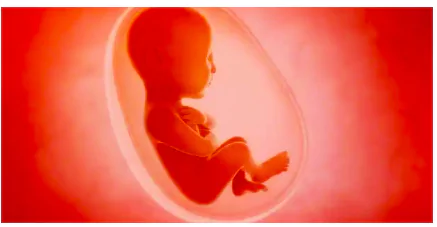Context:
Recently, Researchers from BRIC-THSTI Faridabad and IIT Madras have developed an India-specific model to determine the age of a foetus in a pregnant woman in the second and third trimesters precisely.
About Garbhini-GA2
Garbhini-GA2 is a polynomial regression computer model, developed using the genetic algorithm-based method (using data from the GARBH-Ini study, which focused on pregnant women in North India).
- This model incorporated three of the five routinely measured ultrasonographic parameters during the second and third trimesters to calculate the fetus’s age accurately.
- The model was trained on over 2000 ultrasound scans from Indian women with known pregnancy dates from the first trimester.
- It demonstrated its superior accuracy compared to older formulas such as Hadlock and INTERGROWTH.

Challenges With Existing Methods
Currently, doctors rely on formulas designed for Western populations to estimate the age of Indian fetuses, but these formulas become less reliable as the pregnancy progresses due to variations in growth patterns between Indian and Western babies.
Significance of Garbhini-GA2
-
Precision in Gestational Age Estimation
- In India, many pregnant women receive late prenatal care, leading to challenges in accurately dating pregnancies.
- Garbhini-GA2 fills this gap by providing tailored gestational age estimates based on Indian-specific data, thereby improving care and planning.
-
Facilitate better Clinical Practice
- Enhancing clinical outcomes for both mothers and babies :
- It enables more precise scheduling of interventions and planning of neonatal care in accordance with the anticipated delivery date.
-
Better Strategy for Public Health Policies & Resource Allocation
-
- At the population level, Garbhini-GA2 can enhance estimates of preterm birth and other gestation-dependent outcomes.
Gestational Age
- It is the period of time between conception and birth.
- During this time, the baby grows and develops inside the mother’s womb.
- A normal pregnancy can range from 38 to 42 weeks. Infants born before 37 weeks are considered premature. Infants born after 42 weeks are considered postmature.
Neonatal Mortality Rate
- It is the number of deaths of children below the age of one month per 1000 live births. NFHS-5 (2019-21) : 24.9
Infant Mortality Rate
- It is the number of deaths of children below the age of one year per 1000 live births. NFHS-5 (2019-21) : 35.2
Child Mortality Rate
- It is the number of deaths of children in the age group of 0-4 years per 1000 live births.
Under 5 Mortality Rate
- It is the number of deaths of children in the age group of 0-5 years per 1000 live births. NFHS-5 (2019-21) : 41.9
Maternal Mortality Rate (MMR)
- MMR is the number of maternal deaths during a given time period per 100,000 live births during the same time period. NFHS-5 (2019-21) : 97
|
Also Read: India’s Fight Against Cervical Cancer
News Source: The Hindu
![]() 27 Feb 2024
27 Feb 2024
